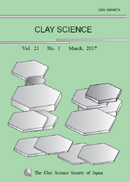Volume 17, Issue 4
Displaying 1-15 of 15 articles from this issue
- |<
- <
- 1
- >
- >|
-
Article type: Cover
2013Volume 17Issue 4 Pages Cover1-
Published: 2013
Released on J-STAGE: June 22, 2017
Download PDF (41255K) -
Article type: Appendix
2013Volume 17Issue 4 Pages App1-
Published: 2013
Released on J-STAGE: June 22, 2017
Download PDF (86K) -
Article type: Appendix
2013Volume 17Issue 4 Pages App2-
Published: 2013
Released on J-STAGE: June 22, 2017
Download PDF (86K) -
Article type: Appendix
2013Volume 17Issue 4 Pages App3-
Published: 2013
Released on J-STAGE: June 22, 2017
Download PDF (86K) -
Article type: Appendix
2013Volume 17Issue 4 Pages App4-
Published: 2013
Released on J-STAGE: June 22, 2017
Download PDF (86K) -
Article type: Article
2013Volume 17Issue 4 Pages 83-91
Published: 2013
Released on J-STAGE: June 22, 2017
Download PDF (10210K) -
Article type: Article
2013Volume 17Issue 4 Pages 93-102
Published: 2013
Released on J-STAGE: June 22, 2017
Download PDF (1467K) -
Article type: Article
2013Volume 17Issue 4 Pages 103-107
Published: 2013
Released on J-STAGE: June 22, 2017
Download PDF (568K) -
Article type: Appendix
2013Volume 17Issue 4 Pages App5-
Published: 2013
Released on J-STAGE: June 22, 2017
Download PDF (111K) -
Article type: Appendix
2013Volume 17Issue 4 Pages App6-
Published: 2013
Released on J-STAGE: June 22, 2017
Download PDF (111K) -
Article type: Appendix
2013Volume 17Issue 4 Pages App7-
Published: 2013
Released on J-STAGE: June 22, 2017
Download PDF (265K) -
Article type: Appendix
2013Volume 17Issue 4 Pages App8-
Published: 2013
Released on J-STAGE: June 22, 2017
Download PDF (156K) -
Article type: Appendix
2013Volume 17Issue 4 Pages App9-
Published: 2013
Released on J-STAGE: June 22, 2017
Download PDF (156K) -
Article type: Cover
2013Volume 17Issue 4 Pages Cover2-
Published: 2013
Released on J-STAGE: June 22, 2017
Download PDF (30K) -
Article type: Cover
2013Volume 17Issue 4 Pages Cover3-
Published: 2013
Released on J-STAGE: June 22, 2017
Download PDF (30K)
- |<
- <
- 1
- >
- >|
